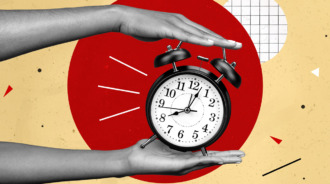

Throughout history, numerous individuals have achieved remarkable results through their unwavering dedication and hard work. One shining example is Serena Williams. She has won 23 Grand Slam singles titles, but the journey to the top was marked by countless hours of training and physical and mental preparation. Fun fact about her: before stepping onto the court, she always ties her shoelaces in a specific way. Serena believes that this brings her good luck and helps her perform at her best.
Trading, like sports, involves calculated risks and the potential for substantial rewards. Successful traders understand that achieving rewards requires a combination of strategic decision-making, diligent research, and continuous learning. So, here’s how to start trading as a beginner:
Develop a watchlist

A watchlist consists of a curated list of stocks, currencies, or other financial instruments that you are interested in trading. This helps you focus your attention on specific assets and allows you to monitor their price movements and market trends. Rather than being overwhelmed by the entire market, you’ll be able to concentrate your efforts on a select group of assets.
When building your watchlist, consider such factors as liquidity, volatility, and relevance to your trading strategy. And bear in mind that some assets may lose their relevance while others may emerge as potential opportunities.
Identify high-probability setups
These setups are trading opportunities that have a higher likelihood of resulting in profitable trades. Let’s say you’re wondering how to start trading forex:
Look for patterns — support and resistance levels, trendlines, chart formations, and candlestick patterns. Combine these with technical indicators like moving averages, oscillators, or Fibonacci retracements to validate your analysis. And then consider the impact of fundamental factors on currency pairs — interest rates, GDP growth, employment data, and inflation rates.
Develop a pre-trade routine
Here’s how you can incorporate a pre-trade routine into the trading process:
- Market analysis: Review the current price action, identify any significant support and resistance levels, and assess the overall market trend.
- Risk assessment: Determine an appropriate position size based on your risk tolerance and the distance to your stop loss level.
- Trading plan review: Assess whether the trade setup meets the criteria specified in your plan, including the entry and exit conditions, timeframes, and risk management guidelines.
- Emotional check-in: Ensure that you are in a calm and focused mindset, free from any distractions or emotional biases that may negatively impact your decision-making.

Consider seasonal and cyclical trends
When it comes to the seasonal patterns of the stock market, the age-old proverb “Sell in May and go away… but remember to return for Halloween” appears to have some degree of validity. (Capital)
Trends can help you anticipate potential shifts in market sentiment and identify favorable trading opportunities.
If you’re learning how to start trading stocks, you need to be aware of September’s risk-averse nature. Over the past 50 years, September has been the only month in which the S&P 500 index posted a negative average return of -0.8%. This statistical anomaly suggests a historically challenging period for equity markets during this month.
In the case of forex, December tends to be the worst month for the US dollar, with an average negative return of -0.9%. The list goes on, so keep researching!
Optimize trading costs

Here are a few tactics to explore:
- Select a reputable broker that offers competitive spreads, low commissions, and transparent fee structures.
- Consider the liquidity and trading volume of the instruments, as higher liquidity often results in tighter spreads and lower costs.
- Utilize limit orders, stop losses, and trailing stops to automate and control your trading positions.
- Understand the tax regulations in your jurisdiction and consider the potential impact on your trading profits.
Review and analyze trade execution
You should review the timing of your entries and exits, the prices at which you executed the trades, and whether they aligned with your planned strategy. It’s also helpful to assess whether slippage occurred and if it had a significant impact on your trading results. By the way, technical issues, such as latency, order execution delays, or platform instability, can contribute to slippage and impact your profitability.
Evaluate and learn from your losing trades
If anything leads from risk to reward, it’s gaining insights into what went wrong. By identifying mistakes, you can recognize areas where your trading approach could be improved. This may include entering the trade without a solid strategy, ignoring key indicators, or failing to set proper orders.
Of course, these aren’t comprehensive steps on how to start trading, but it’s a great foundation.
Sources:
How to create a pre-market routine checklist, Benzinga Pro
Seasonality trends in financial markets, Capital








